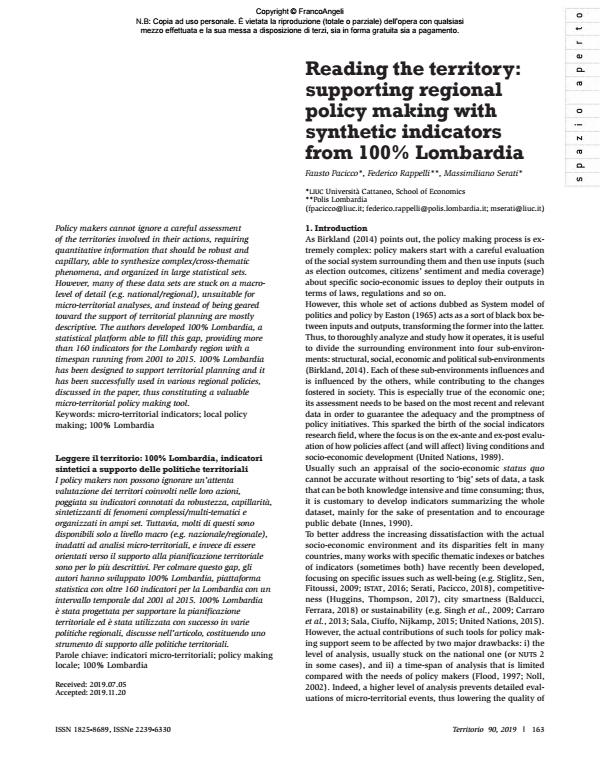Reading the territory: supporting regional policy making with synthetic indicators from 100% Lombardia
Journal title TERRITORIO
Author/s Fausto Pacicco, Federico Rappelli, Massimiliano Serati
Publishing Year 2020 Issue 2019/90
Language English Pages 16 P. 90-178 File size 525 KB
DOI 10.3280/TR2019-090018
DOI is like a bar code for intellectual property: to have more infomation
click here
Below, you can see the article first page
If you want to buy this article in PDF format, you can do it, following the instructions to buy download credits

FrancoAngeli is member of Publishers International Linking Association, Inc (PILA), a not-for-profit association which run the CrossRef service enabling links to and from online scholarly content.
Policy makers cannot ignore a careful assessment of the territories involved in their actions, requiring quantitative information that should be robust and capillary, able to synthesize complex/cross-thematic phenomena, and organized in large statistical sets. However, many of these data sets are stuck on a macrolevel of detail (e.g. national/regional), unsuitable for micro-territorial analyses, and instead of being geared toward the support of territorial planning are mostly descriptive. The authors developed 100% Lombardia, a statistical platform able to fill this gap, providing more than 160 indicators for the Lombardy region with a timespan running from 2001 to 2015. 100% Lombardia has been designed to support territorial planning and it has been successfully used in various regional policies, discussed in the paper, thus constituting a valuable micro-territorial policy making tool.
Keywords: Micro-territorial indicators; local policy making; 100% Lombardia
- Shaping the local business structure: drivers of firm location at the municipal level Fausto Pacicco, Massimiliano Serati, Andrea Venegoni, in Spatial Economic Analysis /2025 pp.484
DOI: 10.1080/17421772.2024.2337902
Fausto Pacicco, Federico Rappelli, Massimiliano Serati, Reading the territory: supporting regional policy making with synthetic indicators from 100% Lombardia in "TERRITORIO" 90/2019, pp 90-178, DOI: 10.3280/TR2019-090018